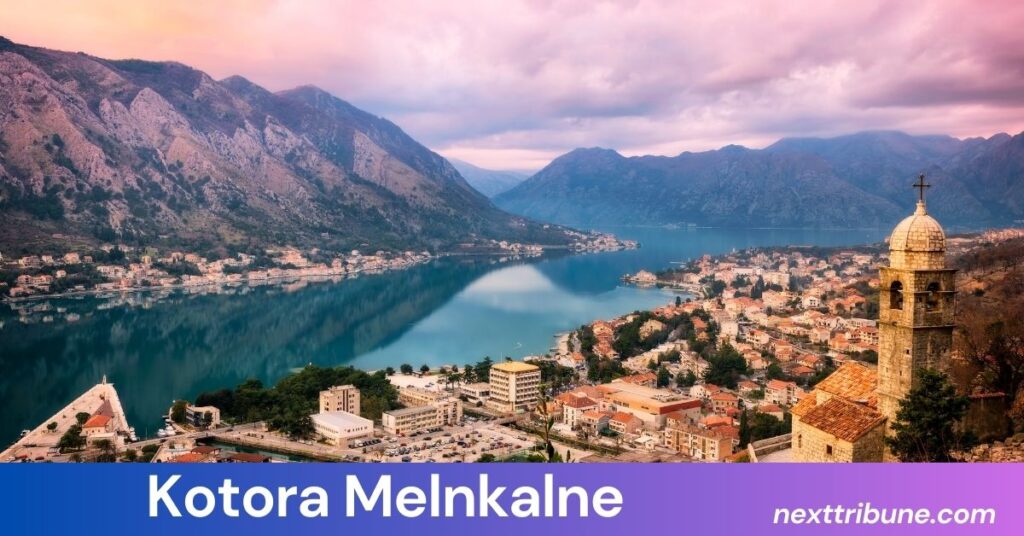
Kotora Melnkalne, commonly known as Kotor, is a picturesque town on the Adriatic coast of Montenegro. Known for its rich history, stunning landscapes, and vibrant culture, it attracts visitors seeking a blend of ancient traditions and modern-day tranquility. This article delves into the essence of Kotor, exploring its historical significance, breathtaking scenery, and why it stands out as a must-visit destination for travelers worldwide.
What is Kotora Melnkalne?
Kotora Melnkalne, or Kotor, is a coastal town located in Montenegro, nestled at the foot of the Orjen Mountains and along the Bay of Kotor, one of the most beautiful and serene bays in the world. The town is known for its historical significance, having been influenced by various cultures throughout the centuries, from Roman times to Venetian rule. With its well-preserved medieval architecture and tranquil atmosphere, Kotor is often seen as a jewel of the Adriatic coast.

A Glimpse into Kotor’s History
The history of Kotor dates back to the Roman period, and over the centuries, it has been a part of various empires, including the Byzantine, Venetian, and Austro-Hungarian empires. The town was once an important trading port and military center, and remnants of its glorious past can still be seen today. From its ancient walls to its medieval churches, Kotor is a place where history is alive at every corner.
Also Read: Rap-Quotes.com Blog Archives: The Ultimate Resource for Hip-Hop Fans
Venetian Influence on Kotor
Kotor’s most significant historical period came during the Venetian Empire, which controlled the town for over 400 years, from 1420 to 1797. During this time, Kotor flourished as a trading hub, and the Venetians left an indelible mark on its architecture and culture. The old town, with its narrow, winding streets and squares, reflects the Venetian influence, making Kotor a unique blend of Italian and Slavic culture.
The Charm of Kotor’s Old Town
Kotor’s Old Town is a UNESCO World Heritage site, recognized for its well-preserved medieval architecture. The moment you enter this charming walled city, you are transported to another era. The cobbled streets, quaint cafes, and magnificent churches tell the story of Kotor’s glorious past.
Architectural Wonders
Some of the most iconic architectural landmarks in Kotor include:
- St. Tryphon Cathedral: A beautiful Romanesque church dating back to the 12th century, St. Tryphon Cathedral is the heart of Kotor’s Old Town. Its stunning façade and intricate interior design make it a must-see for visitors.
- The City Walls: Kotor’s fortifications are among the best-preserved in the Mediterranean. The walls stretch for several kilometers, providing stunning views of the town and the bay. Walking along these ancient walls offers a glimpse into the town’s strategic military history.
- The Maritime Museum: Housed in a Venetian-style building, this museum showcases Kotor’s rich maritime heritage. It offers insights into the town’s role as a naval power and its connection to the Adriatic Sea.
Culture and Traditions
Kotor’s Old Town is not just about architecture—it’s a living, breathing place filled with culture and traditions. The town hosts numerous festivals throughout the year, celebrating everything from music and dance to religious holidays and local crafts. The Kotor Carnival, a colorful celebration of the town’s heritage, is one of the most anticipated events, drawing visitors from around the world.
Natural Beauty Around Kotora Melnkalne
While Kotor’s historical sites are captivating, the natural beauty surrounding the town is equally breathtaking. From the sparkling blue waters of the Bay of Kotor to the rugged mountains that rise above, the landscapes here are nothing short of spectacular.
The Bay of Kotor
The Bay of Kotor, often referred to as Europe’s southernmost fjord, is a major attraction in the region. The bay is surrounded by steep mountains, creating a picturesque and dramatic setting. The waters are calm and clear, perfect for boat rides, swimming, and exploring the charming coastal villages that dot the bay.
Also Read: Freewayget .com: The Next-Generation File-Downloading Platform That Eliminates Frustrations
Lovcen National Park
Just outside Kotor lies Lovcen National Park, a stunning natural reserve known for its hiking trails, panoramic views, and rich biodiversity. The park is home to Mount Lovcen, where visitors can hike to the summit and enjoy sweeping views of the Bay of Kotor and the surrounding landscapes. The park is also home to the Mausoleum of Njegoš, a monument dedicated to the famous Montenegrin ruler and poet.
Why Visit Kotora Melnkalne?
Kotor is a destination that combines history, culture, and natural beauty. Here are a few reasons why Kotor should be at the top of your travel list:
- Historical Significance: Kotor’s well-preserved Old Town and UNESCO World Heritage status make it a living testament to the town’s rich history.
- Natural Beauty: The surrounding landscapes, including the Bay of Kotor and Lovcen National Park, offer incredible opportunities for outdoor activities and relaxation.
- Vibrant Culture: The festivals, local traditions, and cuisine make Kotor a vibrant cultural hub. Visitors can enjoy local seafood, traditional Montenegrin dishes, and regional wines.
- Tranquility: Despite its historical significance and cultural richness, Kotor maintains a serene atmosphere, making it an ideal place for relaxation and rejuvenation.
Travel Tips for Kotora Melnkalne
Best Time to Visit
The best time to visit Kotor is during the spring (April to June) and fall (September to October). The weather is pleasant, and the crowds are smaller compared to the summer months. If you want to experience the town’s lively festivals, consider visiting during the Kotor Carnival or the Summer Festival.
How to Get There
Kotor is easily accessible by road, sea, and air. The nearest airport is Tivat Airport, located about 8 kilometers from Kotor. From there, visitors can take a short taxi or bus ride to the town. Kotor is also accessible by bus from other major cities in Montenegro, and many cruise lines stop at the port of Kotor.
What to Pack
- Comfortable walking shoes for exploring the Old Town and hiking in Lovcen National Park.
- Light clothing for the summer months and a jacket for the cooler evenings.
- Sunscreen and a hat to protect against the Mediterranean sun.
Also Read: ChannelSynCharma: Revolutionizing Multi-Channel Communication
FAQs About Kotora Melnkalne
What is the best way to explore Kotor?
The best way to explore Kotor is on foot. The town’s Old Town is pedestrian-friendly, and walking allows you to truly immerse yourself in the history and culture of the area. Be sure to visit the St. Tryphon Cathedral, the Maritime Museum, and the City Walls for a complete experience.
Is Kotor safe for tourists?
Yes, Kotor is considered very safe for tourists. The town is peaceful, and the locals are friendly and welcoming. However, like any tourist destination, it’s always a good idea to take basic precautions, such as keeping an eye on your belongings.
What should I try in Kotor?
Kotor is known for its seafood, particularly fresh fish and octopus. Try local dishes such as “buzara,” a traditional seafood stew, and “pršut,” a type of cured ham. Don’t forget to sample Montenegrin wines, as the region is known for its excellent wine production.
How long should I stay in Kotor?
While you could explore Kotor in a couple of days, it’s recommended to stay for at least three to four days to fully experience the town and its surroundings. This will give you enough time to visit the major attractions, enjoy the local culture, and take in the breathtaking natural beauty.
Conclusion
Kotora Melnkalne, or Kotor, is a unique blend of history, culture, and natural beauty. Whether you are a history enthusiast, a nature lover, or someone looking for a peaceful getaway, Kotor offers something for everyone. Its stunning landscapes, rich cultural heritage, and welcoming atmosphere make it one of the most enchanting destinations on the Adriatic coast. Plan your visit to Kotor, and let this mesmerizing town captivate your heart.



